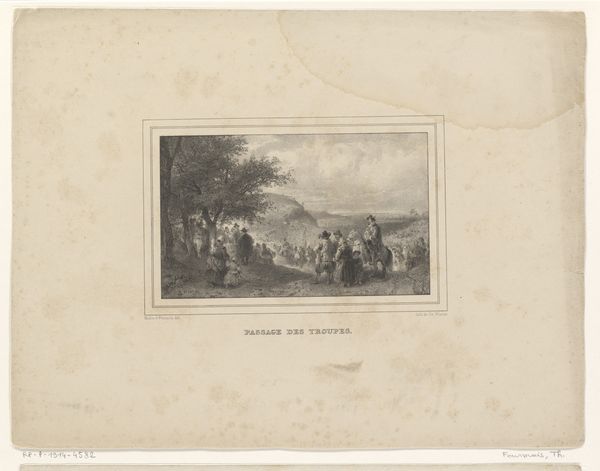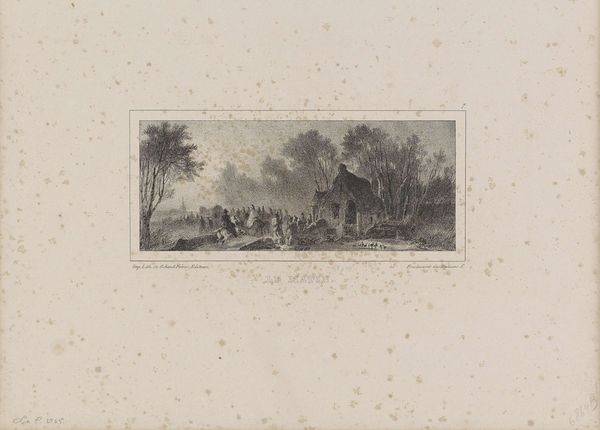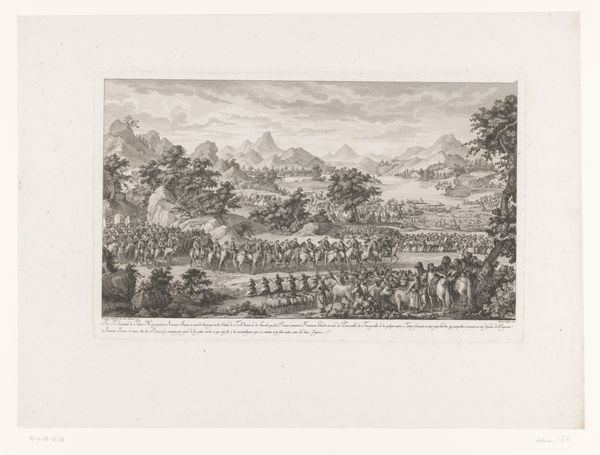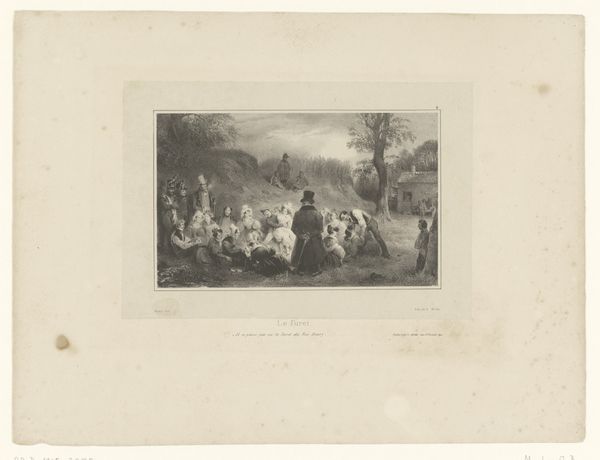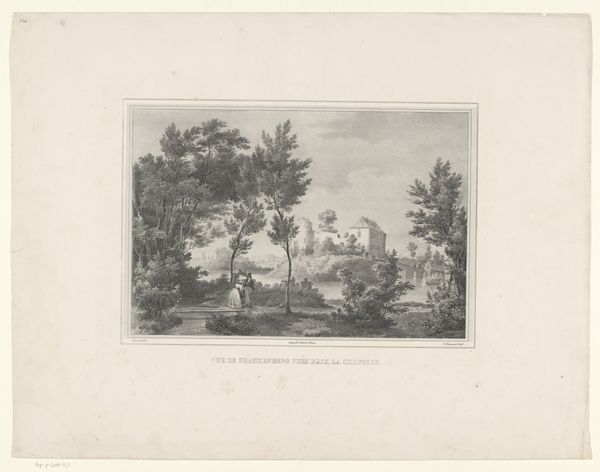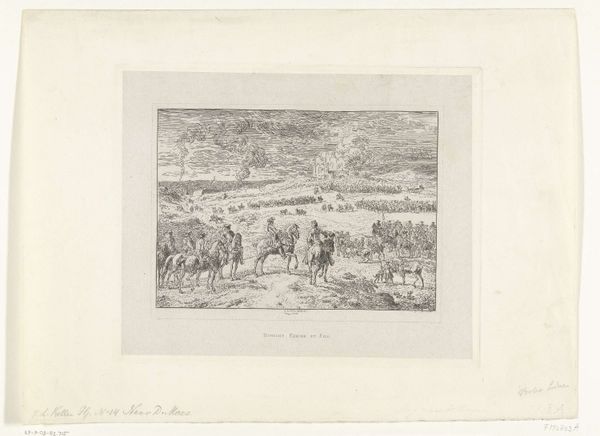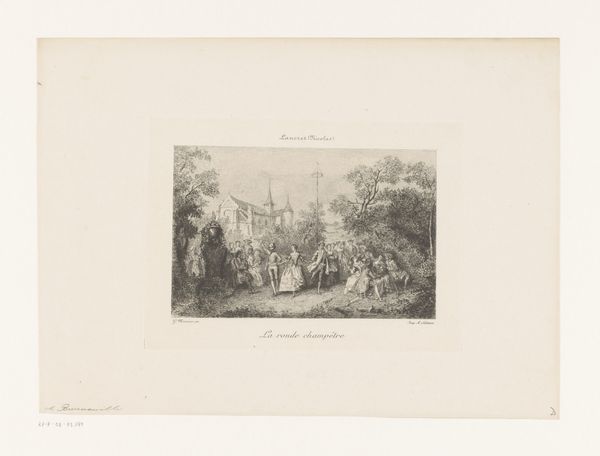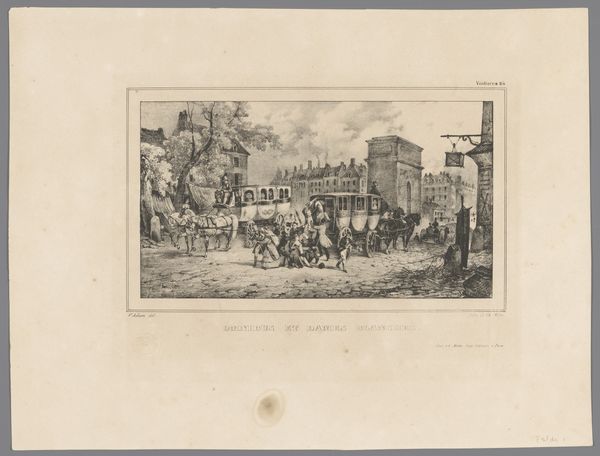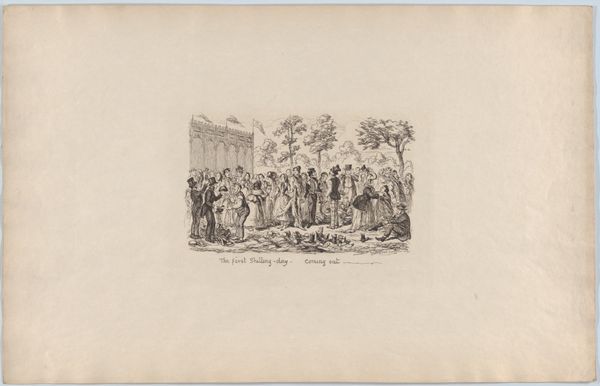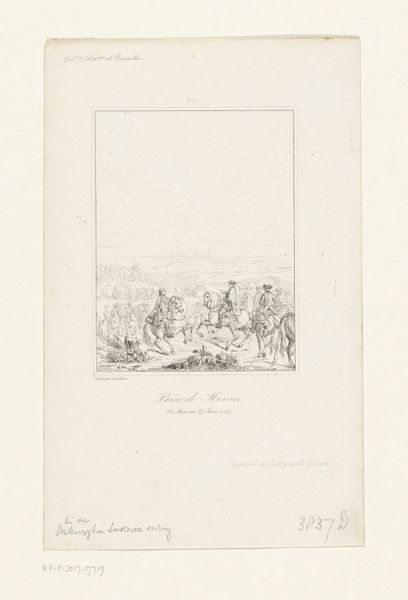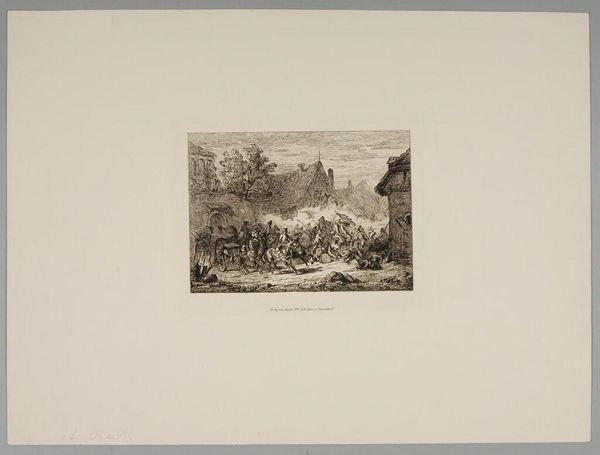
Landschap met promotie van een grenadier door de keizer te paard 1829
0:00
0:00
nicolastoussaintcharlet
Rijksmuseum
print, engraving
#
aged paper
#
light pencil work
# print
#
pencil sketch
#
old engraving style
#
landscape
#
figuration
#
personal sketchbook
#
romanticism
#
history-painting
#
engraving
Dimensions: height 248 mm, width 338 mm
Copyright: Rijks Museum: Open Domain
Nicolas Toussaint Charlet created this print, "Landschap met promotie van een grenadier door de keizer te paard," using lithography. This method, invented in the late 18th century, democratized printmaking, making it more accessible. The print’s materiality is crucial; lithography involves drawing with a greasy crayon on a stone or metal plate, which is then chemically treated to accept ink only where the crayon was applied. This process allows for nuanced tonal gradations, evident in the landscape and figures. It is this very process that influences its appearance, granting the image its textural depth and detail. Charlet's choice of lithography reflects broader social and economic shifts. Unlike older, more laborious techniques like engraving, lithography allowed for quicker, cheaper reproduction, aligning with the era's industrializing spirit. This print, depicting a military scene, speaks to themes of power, hierarchy, and the individual's role within a larger social structure. Ultimately, understanding the printmaking process enriches our appreciation of the artwork, highlighting its connection to both artistic expression and the socio-economic context of its time.
Comments
No comments
Be the first to comment and join the conversation on the ultimate creative platform.
